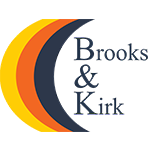Email Crafting to Make You A Better Job Seeker
Job hunting concerns emails and posts, and how you can craft them. You can become a better job seeker by creating a series of emails to help you get noticed. It can be pretty daunting to write the emails that are needed. A good email can open doors. Every email you craft should be personalised, as people deserve a well-crafted and targeted email. We’ve listed some examples of template emails to help get you started. Let’s get started if you’re ready to become a better job seeker.
Reach out to your Network
If you’re ready to reach out to your network, it can be daunting! As you might not know who to reach out to and where to start. People are willing to help, but you need to give specifics on what you’re asking and looking for. That’s the step most people miss. Making sure to ask the right people, the right things.
There is a chance you may know a lot of people in some great careers. When you’re job hunting you should use this to your advantage. Even if you don’t get a direct response, people will know to keep up in mind if an opportunity arises. You can utilise emails as well as utilising your LinkedIn connections. By sending out a post about what you’re looking for and your experience. To see if anyone can help or for your connections to share with theirs. To help get wider exposure.
Step-by-step plan
Furthermore, we have given you a step-by-step guide for you to use. Make sure to draft your talking points. Moreover, your CV so far should be updated so only the relevant information is on it. However, when you’re creating this email or LinkedIn post, people find it easier to have short bulleted lists. Which includes where you’ve been and where you want to go. Besides this, it’ll be easier for people who aren’t familiar with your field. Therefore, it shouldn’t take you long to put together.
It should include:
- A list of your relevant position titles, companies you have worked for and your main responsibilities. This should be like your CV but condensed.
- Include your ideal job and function and any you would consider an alternative.
- Finally, include your desired locations as well as if you have the ability to travel or are flexible.
Once you have all this, you can start drafting! Make sure you don’t send it to any mentors, former bosses, or colleagues.
Be specific in what you’re asking. Is it job leads or posts? Interviews? New contacts and connections or is it all of the above? Include a few details about yourself. Such as your current position, the company and how long you’ve been there. Additionally, what you’re looking for. Your friends may know this information, but others too who it has been passed too may not. After that, include your bullet point list.
Example
“Hi, Friends and Network Connections,
I hope all is well. As some of you may know, I have been in my current position as your position for a company for almost how many years.I have recently decided to look for a new challenge in my field. I am reaching out to you to ask for your help with any leads or contacts.”
Add your ideal jobs and functions next. This will be personalised to you. For example, “I am looking for a mid-level marketing position in London. Ideally in digital marketing or content creation. I would like to join a small company but will also go freelance.”
“If you know of any job opportunities or postings that you can share with me, please send them my way. I have included a list of my past experience, my ideal positions and locations. Please feel free to share or forward this to any connections.”
“Thanks in advance for any help.
Then sign off.”
The Thank You Email
In short, this one is extremely important! Be sure to send a timely thank you email to everyone who interviews you. In fact, send it within 2 to 3 hours of the interview. Keep the email short and sweet. This shows that you’re responsive, courteous and can take action.
Keep in mind that it should be specific enough to job the hiring manager’s memory. Additionally, make sure you include something you spoke about. In the email, reinforce the positive things from the interview. Then state your message, making sure to emphasise that you feel like the job is perfect for you. Next, inspire the decision maker, by highlighting how excellent you would fit in the role. Recap at the end that you’re excited about the opportunity of moving forward.
Example
“Hi Managers Name
Thank you for taking the time to have a chat with me. It was a delight to learn more about the role, and I’m very excited about the opportunity to potentially join the company name. Then add anything specific.
I look forward to hearing from you about the next steps. Please don’t hesitate to contact me if I can provide any additional information.
All the best.
Sign off.”
Follow-up Application/Interview Email
Have you had several interviews? Or sent out your CV and you’re not in the process of waiting? You’re not the only one! 77% of job seekers say they have never heard back from a potential employer. We’ve all been there, constantly waiting to hear something back and we never do so we move on.
However, don’t try and assume the worst. Wait a week or so after you were supposed to hear back and then write a follow-up email. In your email don’t show any signs of impatience, anger or uncertainty.
Example
Subject: Following up on (title/position) interview/application
“Good Morning/Afternoon Hiring Manager’s Name
I hope everything is well.
I know how busy you probably are, but I recently applied/ had an interview for the position and wanted to check in on your decision timeline. I’m enthusiastic about the opportunity to join company and help anything you would be doing with the team. Please let me know if it would be helpful for me to provide any additional information as you move on to the next stage in the hiring process.
I look forward to hearing from you,
All the best,
Then your name.”
Getting a Reference Email
We’ve spoken about getting the right kind of reference before, as it’s extremely important. References can potentially open up doors and land you the job. In fact, you should give the person who you’re requesting the reference the right things to say. Such as, why you’re a good fit for the job, but also be excited to give you the reference. Then share with them why you’re interested in the job and company. Even if someone knows your work, don’t be afraid to give specific points.
Example
“Dear Reference name
The hiring manager for company might be calling you to do a reference check. If they do, they’ll more than likely contact you in the next few days to chat about our relationship and my use of specific strengthin my field.
I’m applying for the position at company because list your reasons. Here are a few achievements from my career, for you to work off.
- Reason one
- Reason two
- Reason three
If there’s anything I can do to help, please let me know.
Thank you. Then sign off.”
Alternatively, you can attach your CV and a link to the job description or post to help them. We hope this blog has helped. If you have any questions about writing emails don’t hesitate to get in touch with our team!



